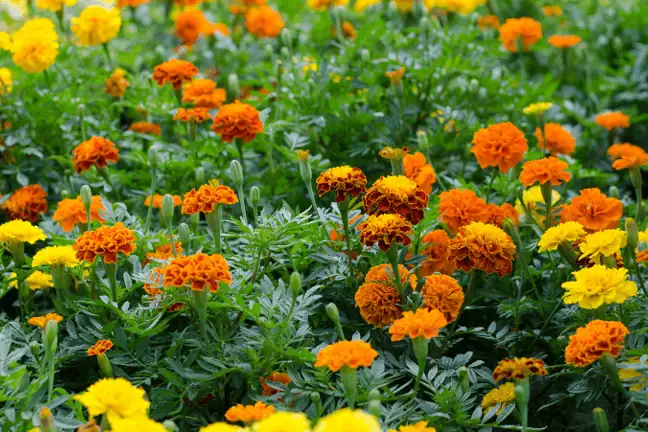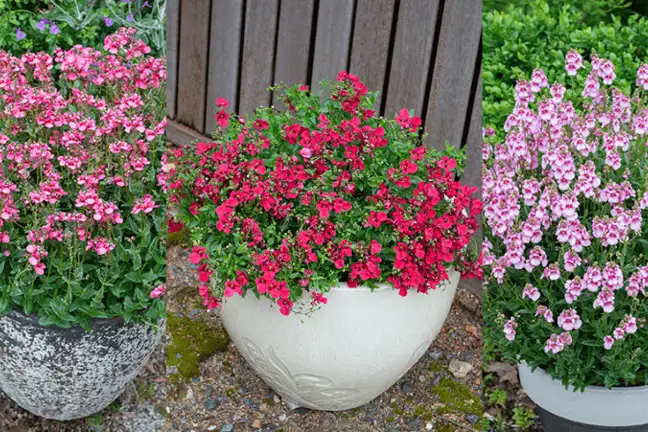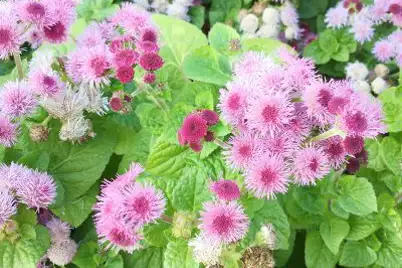It might still be cool however you can get a head start on some fabulous floral colour for the warmer months ahead by sowing seeds now of beautiful gerberas and vibrant marigolds.

Gerberas have such bright happy flowers, with their blooms sitting high and proud on upright stems and making a very popular and striking cut flower. Yates® Gerbera Colour Mix contains a colourful blend of pink, white, yellow and light to dark orange flower colours. Gerberas are perennial plants that can be grown in both pots and garden beds in a sunny position that gets at least 6 hours of sunshine a day. When grown from seed, gerberas do take a while to flower (30 – 50 weeks), but they are a very economical way to grow lots of plants. Start seeds off in trays of Yates® Seed Raising Mix by just lightly pressing seeds into the
surface (the seeds require light to germinate). Water by misting and cover the tray with some plastic cling film to help retain moisture. Seedlings will emerge in 2-3 weeks and can be transplanted when they are large enough to handle.
Yates Marigold Crackerjack is a tall marigold variety with bright double deep gold to pale lemon yellow flowers. Marigolds are hardy annuals that flower for many weeks and are great for filling a sunny garden bed. Seedlings can be raised in trays or seeds can be sown direct where they are to grow. Marigolds attract bees and other pollinators into the garden, so they are great for including in and around the vegie patch.
Sowing and care tips: In cool areas, wait until spring to sow gerberas and marigolds.
Once gerbera and marigold seedlings are established, start feeding with Yates Thrive® Flower & Fruit Soluble Plant Food, which will encourage healthy foliage and lots of gorgeous flowers. Trim off spent flowers regularly to promote a longer flowering period.
Gerberas can be susceptible to sap sucking aphids and diseases like powdery mildew. Regular sprays of Yates Rose Gun will control these insect pests and diseases as well as caterpillars, which can also attack marigolds.
Seedlings tip: protect seedlings from damaging snails and slugs, scatter Yates Snail & Slug Bait around seedlings, potted plants, vegetables and clumps of perennials.
Diascias
Diascias are fantastic cottage style perennial plants that tick a lot of boxes. Plant Growers Australia have a wonderful range of diascias in their 'Gardascia' range, which have been bred for superior performance in Australian conditions.

Gardascia diascias from left to right pretty 'Candy Pink' and vibrant 'Raspberry', 'Appleblossom' and gorgeous 'Strawberry'.Images and Gardascia diascia information courtesy of Plant Growers Australia.
Gardascia diascias grow to around 40 cm tall and spread to 80 cm wide, quickly forming an attractive dense dome of foliage. They can be grown in large drifts in wildflower gardens, planted on embankments, grown next to retaining walls where they can cascade over the edge and are also look beautiful in pots. Their showy flowers are on display for most of the year and will attract pollinating insects like bees and butterflies.
They'll do well in either full sun or part shade, prefer well-drained soil and will tolerant both frost and dry conditions once established. Maintenance is as simple as giving them a light prune after the main flowering flush in spring has finished. This not only helps promote a compact habit but also faster reblooming.
Every 6 – 8 weeks feed diascias with Yates® Thrive® Natural Roses & Flowers Organic Based Pelletised Plant Food. Spread the pellets around the root zone of both in- ground and potted plants. Yates® Thrive® Natural Roses & Flowers Organic Based Pelletised Plant Food contains aspecial combination of more than 50% natural ingredients, boosted with fast acting fertilisers, including flower-promoting potassium, to encourage both vigorous green leaf growth and lots of beautiful diascia flowers.


